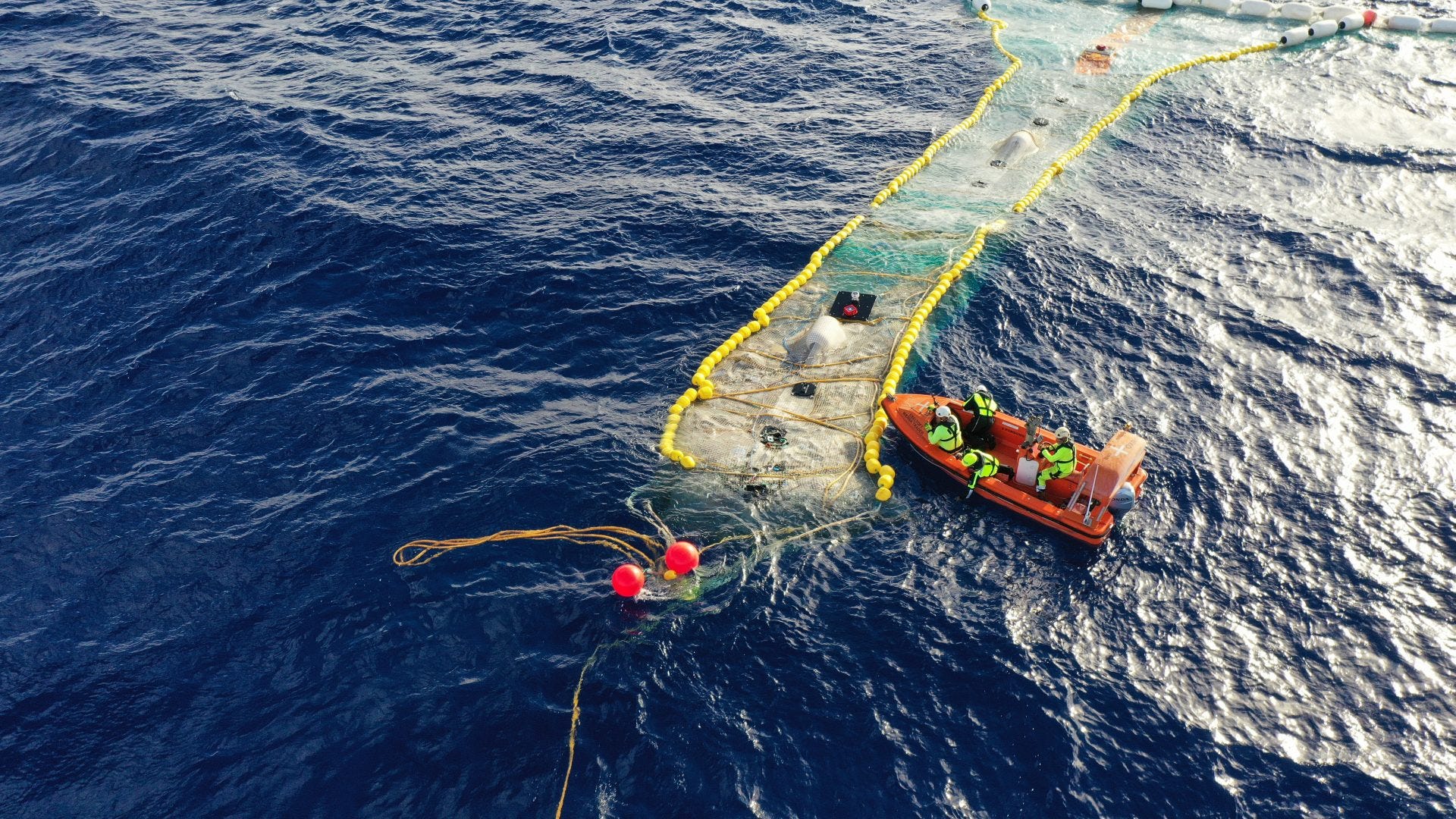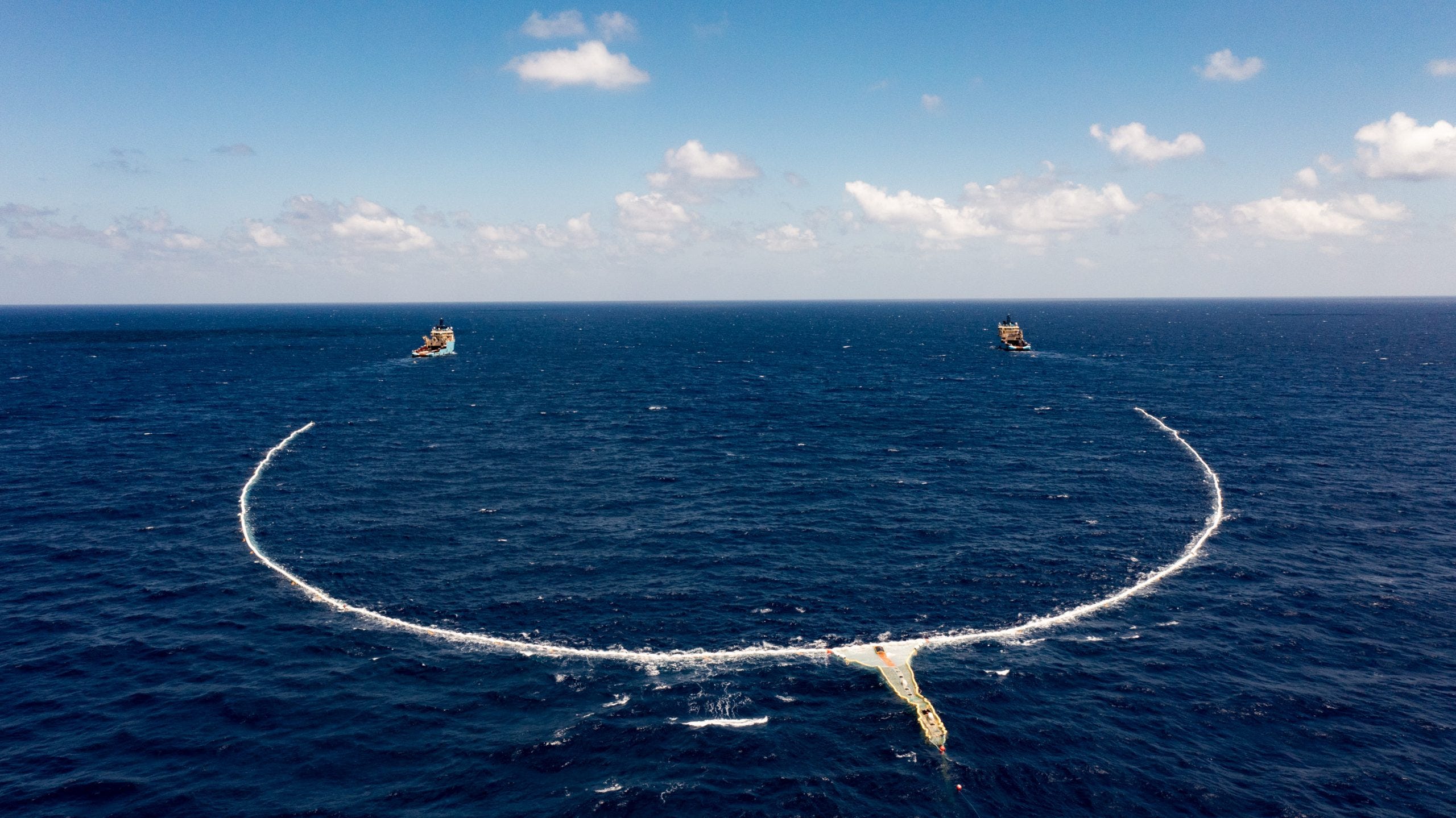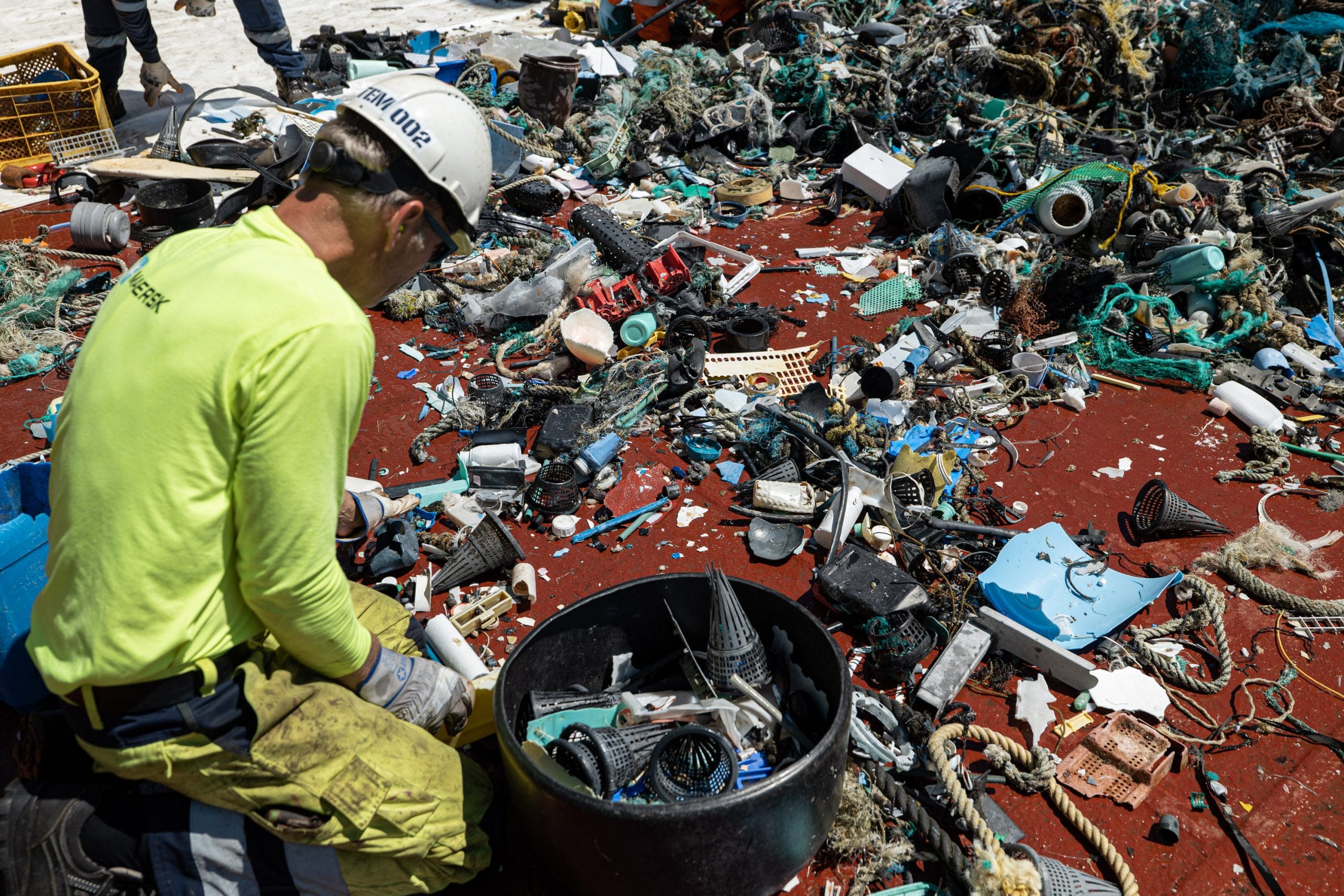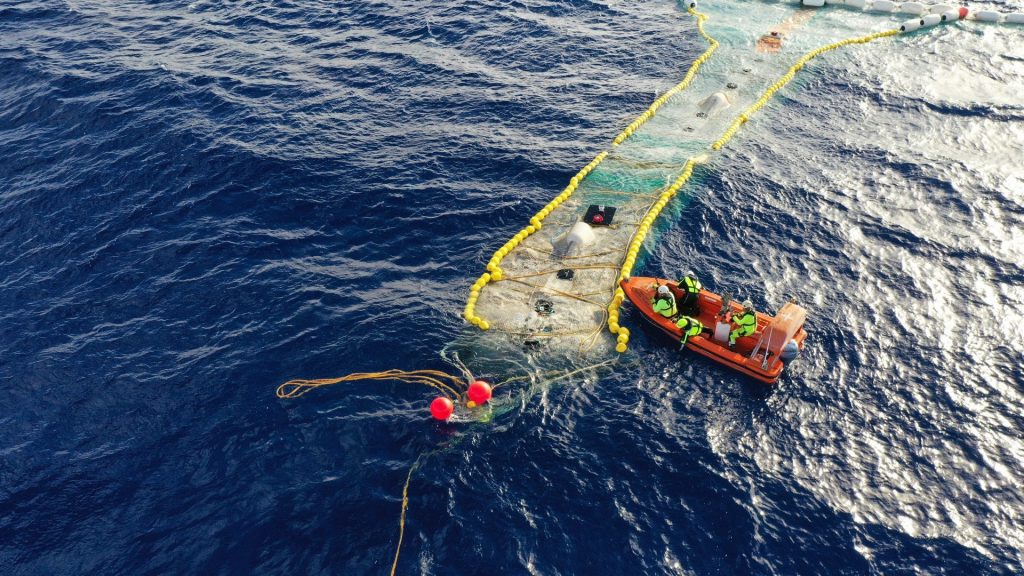
The Ocean Cleanup
- The Ocean Cleanup, a nonprofit organization, aims to rid the world's oceans of plastic.
- The group recently debuted a new device that collected 20,000 pounds from the Great Pacific Garbage Patch.
- But some scientists worry the device still isn't effective or environmentally friendly enough.
It's been nearly a decade since Boyan Slat announced at age 18 that he had a plan to rid the world's oceans of plastic.
Slat, now 27, is a Dutch inventor and the founder of a nonprofit called The Ocean Cleanup, which aims to remove 90% of floating ocean plastic by 2040.
That goal has often seemed unattainable: The Ocean Cleanup launched its first attempt at a plastic-catching device in 2018, but the prototype broke in the water. A newer model, released in 2019, did a better job of collecting plastic, but the organization estimated that it would need hundreds of those devices to clean the world's oceans.
So scientists and engineers began to question whether the group could deliver on the tens of millions of dollars it had acquired in funding.
But over the summer, the organization pinned its hopes on a new device, which it nicknamed "Jenny." The installation is essentially an artificial floating coastline that catches plastic in its fold like a giant arm, then funnels the garbage into a woven, funnel-shaped net. Two vessels tow it through the water at a speed of around 1.5 knots (slower than normal walking speed) and the ocean current pushes floating garbage toward the giant net.
In early August, the team launched Jenny in the Great Pacific Garbage Patch, a trash-filled vortex located between Hawaii and California. The garbage patch is home to the largest accumulation of ocean plastic in the world - more than 1.8 trillion pieces, according to The Ocean Cleanup's estimates.
Last week, Jenny faced its final test as the organization sought to determine whether it could bring large amounts of plastic to share without breaking or malfunctioning. The device successfully hauled 9,000 kilograms (nearly 20,000 pounds) of trash out of the Pacific Ocean - proof that the garbage patch could eventually be cleaned up.
"Holy mother of god," Slat tweeted that afternoon. "It all worked!!!"
-The Ocean Cleanup (@TheOceanCleanup) October 11, 2021
How the new device works
Slat's ocean-cleaning device has come a long way since the original prototype: a 330-foot-long floating barrier that resembled a long pipe in the water.
The newest version is U-shaped and more flexible, like the lane dividers in a pool. Once its attached net gets full of plastic (every few weeks or so), a crew hauls it up out of the water and empties the garbage onto one of the vessels that pull it.

The Ocean Cleanup
Then once it's brought to shore, the plastic gets recycled. For now, The Ocean Cleanup is using the plastic to make $200 pairs of sunglasses, with the proceeds funneled back into the cleanup efforts. Eventually, the organization hopes to partner with consumer brands to make more recycled products.
Slat estimated that the team will need around 10 Jennys to clean up 50% of the Great Pacific Garbage Patch in five years. A single device can hold between 10,000 and 15,000 kilograms (22,000 to 33,000 pounds) of plastic, he wrote on Twitter.
Concerns about the ocean-cleaning device linger

The Ocean Cleanup
The Ocean Cleanup system collects several types of floating garbage, including large containers, fishing nets, and microplastics just a few millimeters in size. But it only captures plastic floating near the ocean's surface. A study published last year suggested that there may be upwards of 30 times more plastic at the bottom of the ocean than near the surface.
The organization, however, emphasizes that large pieces of floating plastic will ultimately degrade into microplastics that are much harder to clean up.
The Jenny device, of course, also doesn't prevent plastic from entering oceans to begin with. Researchers estimate that around 11 million metric tons of plastic are dumped into the ocean each year. By 2040, that figure could rise to 29 million metric tons. Ten Jenny devices will only be able to collect 15,000 to 20,000 metric tons per year, according to The Ocean Cleanup.

The Ocean Cleanup
What's more, the boats that pull the Jenny device require fuel, which means there's an environmental cost. The device was originally designed to passively collect plastic using the ocean's current, but that design led to it spill too much of the trash it had collected. Now that The Ocean Cleanup has opted to use towing vessels, it is purchasing carbon credits to offset their emissions.
"Once plastic has gotten into the open ocean, it becomes very expensive and fossil-fuel intensive to get it back out again," Miriam Goldstein, director of ocean policy at the Center for American Progress think tank, recently told Reuters.
But Slat tweeted on Saturday that there's still time to address those concerns.
"Lots of things still to iron out," he wrote of his group's plastic-cleaning work, "but one thing we now know: deploy a small fleet of these systems, and one can clean it up."
